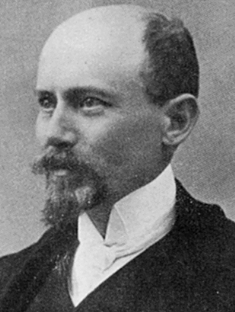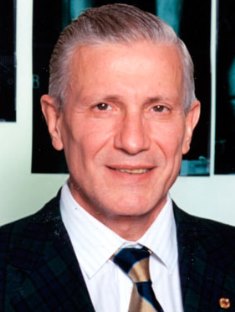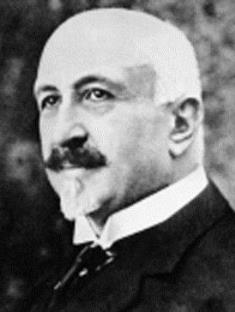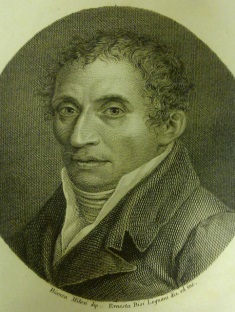
History of Orthopaedics
A Brief History of Orthopaedic Surgery in Italy
Padua, Italy
It is almost an impossible task to try and summarise in a brief article all the history of Trauma and Orthopaedics in Italy. So we will focus on the pioneers who contributed effectively to the improvement of this discipline in Italy and worldwide.
Prof Alessandro Codivilla (1861-1912) is considered the father of orthopaedic surgery in Italy. He was a former general surgeon who at the age of 38 years resigned from general surgery practice and elected to exclusively practise trauma and orthopaedic surgery becoming the director of the Rizzoli Institute in Bologna [1]. His main contribution to the world of orthopaedics was in the field of tendon transplantation where his innovations served patients who suffered complications of poliomyelitis. He also contributed to the treatment of a number of conditions including hip dislocations, club feet, scoliosis and cerebral palsy and had an interest in limb lengthening and reconstruction surgery as well [2]. In 1903, he was the first to apply skeletal traction by means of a pin through the os calcis as a method of deformity correction for malunited fractures [3]. Throughout his lifetime, he published a total of 124 articles, 25 of which were in foreign languages [2]. He was a member of several national societies, and the founder and first president of the Italian Society of Trauma and Orthopaedics (SIOT). During his leadership, the Rizzoli Institute became world famous and its fame, as the Mecca of orthopaedic surgery, continued to spread in the following years. After his death in 1912, the institute continued to flourish and reached its highest pinnacle under the supervision of Prof Vittorio Putti (1880-1940) who was also a pioneer in the treatment of congenital hip dislocations introducing a device which was named after him and used for the treatment of the first stages of the disease [4]. Prof Putti’s research focused on the treatment of open fractures, nerve and tendon injuries, Madelung deformities and correction of limb and spine deformities [5]. He also introduced the concept of cineplastic amputation utilising the muscles of a stump to actuate artificial limbs during the First World War [5, 6]. Due to his eminence in the orthopaedic field, he was invited to lecture around the world and was the guest speaker at the American College of Surgeons meetings held in Boston in 1934 and Chicago in 1937. Prof Putti was also one of the formal founders of the “Société Internationale de Chirurgie Orthopédique et de Traumatologie” (SICOT) and the third SICOT World Congress was held in Bologna in 1936 [7]. He published extensively on bone tumours and his research work was particularly important in understanding and treating osteosarcomas. In 1914, Prof Putti was the first surgeon in the world to perform pelvic resection followed by reconstruction with a hip transposition technique for a sarcoma affecting the pelvis and proximal femur in a 17-year-old male patient [8]. However, later on thanks to the efforts of Prof Italo Federico Goidanich (1922-1966), who established the Bone Tumour Center in 1955, and Prof Mario Campanacci (1932-1999) the Rizzoli Institute became a world renowned center for the diagnosis and treatment of musculoskeletal tumours.
 Prof A. Codivilla (1861-1912): Father of Italian orthopaedic surgery |  Prof M. Campanacci (1932-1999): A pioneer of musculoskeletal oncology surgery |
Prof Campanacci was one of the three pioneers in the field of musculoskeletal oncology, together with Dr Henry J. Mankin and Dr William F. Enneking (1926-2014). He was one of the first surgeons in the world to perform reconstructive surgery instead of amputations in sarcoma patients. Prof Campanacci became so famous abroad and particularly in the US, that at those times it was said: “Campanacci is the only Italian word that any orthopaedic surgeon in the world should know”. After him, his pupils Prof Mario Mercuri, Dr Stefano Boriani, Prof Rodolfo Capanna, Dr Roberto Biagini and Prof Pietro Ruggieri continued his work in Bologna, Florence, Rome and Padua. The department of orthopaedic surgery in Padua was first established by Prof Calogero Casuccio (1909-2003), who was a pupil of Prof Putti and a former president of SICOT.
Another prestigious institute in Italy was the one founded by Riccardo Galeazzi (1866-1952) in Milan. Under his guidance the “Institute dei Rachitici” became an important referral centre for trauma and orthopaedics in Italy. The majority of Galeazzi’s work focused on scoliosis, skeletal tuberculosis, acute arthritis in the infants and juvenile ostechondrosis [9]. His research work was on bone grafts, epiphyseal cartilage transplants and treatment of congenital dislocation of the hip joint (more than 12,000 treated cases were reported) [9]. He also described the Galeazzi test for assessment of hip joint dislocations in developmental dysplasia of the hip. Two other Milanese surgeons, Dr Silvio Rolando and Dr Giovanni Battista Monteggia were also famous and had a fracture named after each of them.
 Prof R. Galeazzi (1866-1952): Described radius fractures associated with distal radioulnar joint dislocations named after him |  Prof G.B. Monteggia (1762-1815): Described proximal ulna fractures associated with radial head dislocations named after him |
The Institute of Trauma and Orthopaedics at the University of Rome was founded by Prof Riccardo Dalla Vedova (1871-1942) and then led by Prof Carlo Marino-Zuco (1893-1965). Prof Dalla Vedova worked on the treatment of skeletal tuberculosis and had a special interest in rehabilitation following trauma surgery. On the other hand, Prof Marino-Zuco described important techniques for treatment of fractures especially that related to the spine.
Prof Oscar Scaglietti (1906-1993), another famous pupil of Prof Putti, was appointed director of the department of orthopaedic surgery in Florence at a very young age. He was an exceptionally skilled surgeon, a pioneer of disk herniation surgery and one of the fathers of hand surgery in Italy. One of his pupils, Piergiorgio Marchetti joined Prof Campanacci as director of the department of orthopaedic surgery at the Rizzoli Institute and this was followed by Prof Maurilio Marcacci, who is internationally recognised for surgeries performed around the knee joint.
Several other pioneers who deserve recognition for their devotion and commitment to orthopaedics include: Prof Francesco Delitala (1883-1983) for his research work on herniated disc pathology, Prof Francesco Pipino (1931-2014) for his remarkable achievements in the development of total hip arthroplasty surgery, and Prof Giovanni De Bastiani for his research on limb lengthening using axial external fixators.
In the meantime, many other prestigious surgeons from Italy continue to contribute to the development of modern orthopaedics nationally and internationally.
- Nigrisoli B. Notizie su la vita e l’opera di Alessandro Codivilla. Rocca San Casciano, Italy: Cappelli; 1942
- Brand RA. Advances in limb lengthening and reconstruction: Alessandro Codivilla, MD, 1861-1912. Clin Orthop Relat Res. 2008;466:2901-2
- Peltier LF. The role of Alessandro Codivilla in the development of skeletal traction. J Bone Joint Surg Am. 1969;51:1433
- Putti V. Early treatment of congenital hip dislocation. J Bone Joint Surg. 1933;15:16–21
- Putti V. Historic artificial limbs. 1933. Clin Orthop Relat Res. 2003;412:4-7
- Putti V. The utilization of the muscles of a stump to actuate artificial limbs: cinematic amputations. Br Med J. 1918;1:635-8
- Di Matteo B, Tarabella V, Filardo G, Viganò A, Tomba P, Marcacci M. Postcards from the past: the Third SICOT Congress, Bologna 1936. Int Orthop. 2014;38:1745-50
- Biagini R, Ruggieri P. Resection of the pelvis due to bone tumor. The first case treated in the Rizzoli Orthopedic Institute in 1914. Chir Organi Mov. 1986;71:69-73
- Scaglietti O. Riccardo Galeazzi, 1866-1952. J Bone Joint Surg Br. 1953;35-B:679-80

















